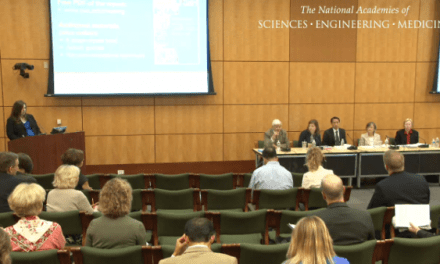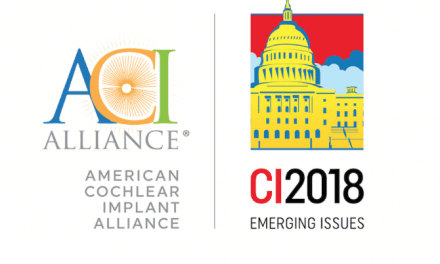
|
Those of us who are concerned with the hearing aid industry know that amplification is in the unfortunate position of being a “best-kept” secret for the majority of those who need it. Although hearing aids are items that can bring tremendous value to users’ lives, more than two-thirds of the people who could benefit from them choose not to give them a chance. Many often cite cost as the primary reason they do not pursue hearing help.
Just as amplification itself is a best-kept secret, most consumers are not aware of several avenues through which costs of hearing aids can be covered partially or completely, or ways that out-of-pocket expenses can be broken down into more manageable monthly chunks. Since nearly a third of patients commonly expect practices to take the role of a finance company by billing the patient monthly if they can’t afford a lump sum for hearing aids,1 it benefits practitioners and patients when consumers are made aware of the various financing options. Patients can get hearing help much sooner than they might have been able to on their own, and practitioners get to help consumers without putting themselves at risk with a hefty accounts receivable tab. Furthermore, educating patients on the various financing options enables them to trust more deeply that you have their best interests in mind, which helps establish long-term relationships with patients and can generate referrals as well.
A Good Position
“The [hearing health professional] is in the best position to tell patients about financing options,” says Mike Langhout, president of Seattle-based Audient Alliance, a division of the Northwest Lions Foundation for Sight and Hearing. Langhout’s organization has supplier relationships with Oticon, Phonak, and Siemens, and helps low-income patients obtain hearing aids and hearing services at discounted prices through a provider network. If patients are unaware of Audient, however, the average practitioner has ample opportunity to come to the rescue with information about financing assistance.
Although there will be opportunities to promote financing options in advertising, direct mail, and on a practice’s Web site, the best time to discuss payment options is when the patient is in the office, because he or she can then consider payment options right along with amplification options.
Tough Decisions
Fifty-seven percent of patients who were tested for and determined to have hearing loss but did not purchase hearing aids said cost was the primary reason they didn’t make a purchase.2 Many people who get their hearing evaluated are not prepared for the possibility of a test revealing hearing loss, notes Gerri Hanna, director of advocacy and policy for the Alexander Graham Bell Association for the Deaf and Hard of Hearing (AG Bell), a Washington, DC-based organization that serves parents of children with hearing loss, hearing health and education professionals, and adults who are deaf or hard of hearing. Many also are not aware of the cost of hearing aids and are likely to have not thought through how they will pay for the amplification they need. Because of this, practitioners should be prepared to field a variety of questions, including inquiries about hearing aid costs. If hearing care professionals have done a good job of communicating the value of hearing aids, discussing the options available for financing the devices will help put patients at ease and enable them to still purchase the technology that will make a difference in their lives.
“The value of better hearing can be discussed in the context of improved communication, better social connections, less social isolation, improved productivity, and a more pleasant outlook on life,” Langhout says, adding that hearing care professionals could discuss with patients how hearing aids enable emotional fulfillment through communication. When discussing this, mention the results of the landmark 1999 National Council on Aging study (www.ncoa.org/attachments/UntreatedHearingLossReport.pdf) that demonstrated the contributions of hearing aids to positive mental health.
The best time to bring up payment options for hearing aids and related services is after the hearing loss is confirmed. “If I’m a provider, I’m probably not going to know what hearing aid is best until I’ve evaluated the patient,” Langhout notes. When you are aware of the type and severity of a patient’s hearing loss, and have compiled a short list of appropriate hearing aid choices for the patient, it makes sense to discuss the costs of each, with financing options to follow.
Financing Options
Depending on their location, patients can obtain financing options from the government, health insurance plans, social organizations, or financing companies. Hearing health professionals should be prepared to discuss these options with all patients. It is important to do this because the education could offer much needed encouragement to patients who see no possible way to pay all at once for hearing aids. “They may perceive that they have only one choice, which is to pay for it all or don’t get it,” Langhout notes. “This seems to be limiting their choices. Every patient should be aware of financing options.”
Government coverage for hearing aids, especially under Medicare, is “mostly unavailable,” Langhout says. However, in some instances, Medicare will cover the costs of the initial diagnostic exam.
Medicaid is a little more lenient, sometimes providing a reimbursement to the provider, Langhout says. This type of coverage varies by state, but generally is quite low, at 5% to 10% of the costs. Some states do not offer Medicaid reimbursements at all.
Practitioners’ acceptance of Medicaid patients can be low, with some professionals not taking on Medicaid patients at all, and others taking only a few per month. If you are a hearing health professional who accepts Medicaid, let your patients know they may be able to get some money off the price of their hearing aids through this channel; they will appreciate this information, as well as your desire to help patients in need. If you are not a Medicaid provider, consider finding out which practitioners in your area do accept Medicaid so you can make referrals.
Insurance Coverage
Insurance coverage is sporadic as well—it is not available with every insurance plan. Of the eight states that mandate hearing aid coverage, reimbursement varies based on several factors, according to AG Bell’s Hanna, including the patient’s age, cost of the hearing aids, and the time periods for replacement. For example, Rhode Island requires every health insurance contract or policy to provide $400 in coverage per hearing aid per ear every 3 years for children and adults.

|
Langhout notes that Ear Professionals International Corp (EPIC), City of Industry, Calif, offers hearing aid service plans as a value-added option for insurance companies and groups that have defined benefits coverage. With coverage from EPIC, costs of hearing aids and services are partially paid, with the employee paying the balance.
When it comes to discussing insurance coverage, it helps to have signage in the office announcing accepted plans, reinforced by discussion during the talk about hearing aid costs.
In addition to governmental and health care coverage, several companies and social organizations offer assistance with hearing aids.
The Lions Clubs (www.lionsclubs.org) which has groups available in 200 countries and regions, sponsor needy patients who require hearing aids, paying for services to fit refurbished amplification devices to these consumers. The refurbished hearing aids are obtained through the Lions Clubs International Hearing Aid Bank Program, which takes in hearing aids at more than 20 locations across the country. Patients receiving hearing aids from the Lions Clubs in this manner typically pay modestly toward the costs for products and services.
The Sertoma Club (www.sertoma.org), whose name stands for “Service to Mankind,” is another organization with a focus on hearing loss. The organization is in its second year of the SafeEars! Project, which was created in collaboration with the Wise Ears! Program, and was launched by the National Institute on Deafness and Other Communication Disorders and the National Institute for Occupational Safety and Health. Industry companies E-A-R Corp, Indianapolis, and Frye Electronics, Tigard, Ore, sponsor the program. In its first year, Safe Ears enlisted help from 115 Sertoma Clubs and educated more than 250,000 people about noise-induced hearing loss through talks and screenings. This year, the organization has a television public service announcement for distribution on DVD.
In addition to educational outreach, this organization has the Sertoma Hearing Aid Recycling Program, which, like the Lions Clubs, provides hearing aids to people with limited incomes. Sertoma Clubs collect used hearing aids, get them refurbished, and then get them into the hands of people who need them. In some cases, the clubs raise funds for patients in need to help them purchase hearing aids, although the recipient may still have to pay for necessary services.
Options in the Industry
The Starkey Hearing Foundation’s Hear Now Program (www.sotheworldmayhear.org/forms/hearnow.php) helps permanent United States residents with limited resources obtain hearing aids. This branch of the foundation, created by Starkey founder William Austin, collects hearing aids for refurbishing. People receive hearing aids after being deemed eligible through an application process, but are responsible for the cost of a hearing evaluation as well as an application fee. Consumers are responsible for finding professionals to fit the hearing aids for them; if you encounter a patient who is interested in pursuing this program, you will need to refer them to practitioners who are willing to assist Hear Now patients, if you do not do this yourself.
Phonak’s new Hear the World initiative (www.hear-the-world.com) launched a foundation in January that is slated to lend financial and technological support to groups, public institutions, and individuals who work to improve the lives of people with hearing loss. The foundation will also support some individuals with hearing problems, according to the organization’s Web site.
In addition to hearing aid companies offering charitable help are companies in the industry that offer payment programs. Third-party financing has the advantage of on-the-spot approval. Unlike other possible avenues through which hearing aids can be paid for, a patient can sign up for these programs, such as the ones offered by CareCredit, and receive financing the same day they request it, if they are eligible. The practitioner also receives payment in a matter of days. Third-party programs also can be used to cover the full costs of hearing aids, while other programs may only offer partial coverage.
There are generally many types of options for these plans, including no-interest plans, as well as extended-payment plans. These plans offer affordable monthly rates; for example, with CareCredit, a 48-month plan with an interest rate of 11.9% would result in a monthly payment of $92 on a $3,500 charge.
In addition to the quickness with which patients can learn if they are eligible for one of these payment programs, financing enables practices to focus more effort on caring for patients than on keeping track of accounting concerns. In a 2006 study, 32% of patients said that in the absence of payment plan options, they would be most likely to ask the practice to function in the role of a finance company by billing the patient monthly.1 Practices offering financing programs can expend all of their energy on improving patients’ quality of life with hearing aids rather than jeopardizing these relationships by having to play creditor.
Strive for Due Diligence
Just as most patients don’t know much about today’s hearing technology, many patients do not know that they aren’t necessarily resigned to paying for the full price of their hearing aids out of pocket in one lump sum. In the same manner that practitioners should inform patients of assistive listening devices to accompany hearing aids, professionals will be doing due diligence on their patients’ behalf if they inform them of the many options available for paying partially or in full for hearing aids. To help patients make informed decisions, consider creating a handout that lists and compares the possibilities.
References
- Inquire Market Research (2006). The Impact of Patient Payment Plans on Purchase Behavior: Results of a study with Patients Requiring a Hearing Device. White paper.
- Inquire Market Research (2006). Audiology Tested Not Sold Survey Findings. White paper.
Danielle Campbell-Angah is a freelance writer for CareCredit and former editor of an audiology publication. She can be reached at .





